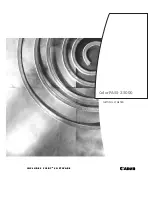
_____________________________________________________________________
724-746-5500 | b lackb o x.co m
Page 147
Time
No
encryption
3DES
SSH tunnel
NSCA for single check
~ ½ second
~ ½ second
~ ½ second
NSCA for 100 sequential checks
100 seconds
100 seconds
100 seconds
NSCA for 10 sequential checks, batched upload
1 ½ seconds
2 seconds
1 second
NSCA for 100 sequential checks, batched upload 7 seconds
11 seconds
6 seconds
No
encryption
SSL
no encryption -
tunneled over
existing SSH session
NRPE time to service 1 check
1/10
th
second 1/3
rd
second
1/8
th
second
NRPE time to service 10
simultaneous checks
1 second
3 seconds
1 ¼ seconds
Maximum number of simultaneous
checks before timeouts
30
20 (1,2 and 8) or
25 (16 and 48 port)
25 (8 port), 35 (16
and 48 port)
The results were from running tests 5 times in succession with no timeouts on any runs. There are a
number of ways to increase the number of checks you can do.
Usually when using NRPE checks, an individual request will need to set up and tear down an SSL
connection. This overhead can be avoided by setting up an SSH session to the
console server
and
tunneling the NRPE port. This allows the NRPE daemon to run securely without SSL encryption, because
SSH will provide the security.
When the
console server
submits NSCA results, it staggers them over a certain time period (for example,
20 checks over 10 minutes will result in two check results every minute). Staggering the results like this
means that if the power fails or other incident causes multiple problems, the individual freshness checks
will be staggered too.
NSCA checks are also batched. In the previous example, the two checks per minute are sent through in a
single transaction.
10.4.5 Distributed Monitoring Usage Scenarios
Below are a number of distributed monitoring Nagios scenarios:
I.
Local office
In this scenario, the
console server
is set up to monitor each managed device’s console. Configure it
to make a number of checks, either actively at the Nagios server's request, or passively at preset
intervals, and submit the results to the Nagios server in a batch.
You can augment the
console server
at the local office site by one or more Intelligent Power
Distribution Units (IPDUs) to remotely control the power supply to the managed devices.
















































